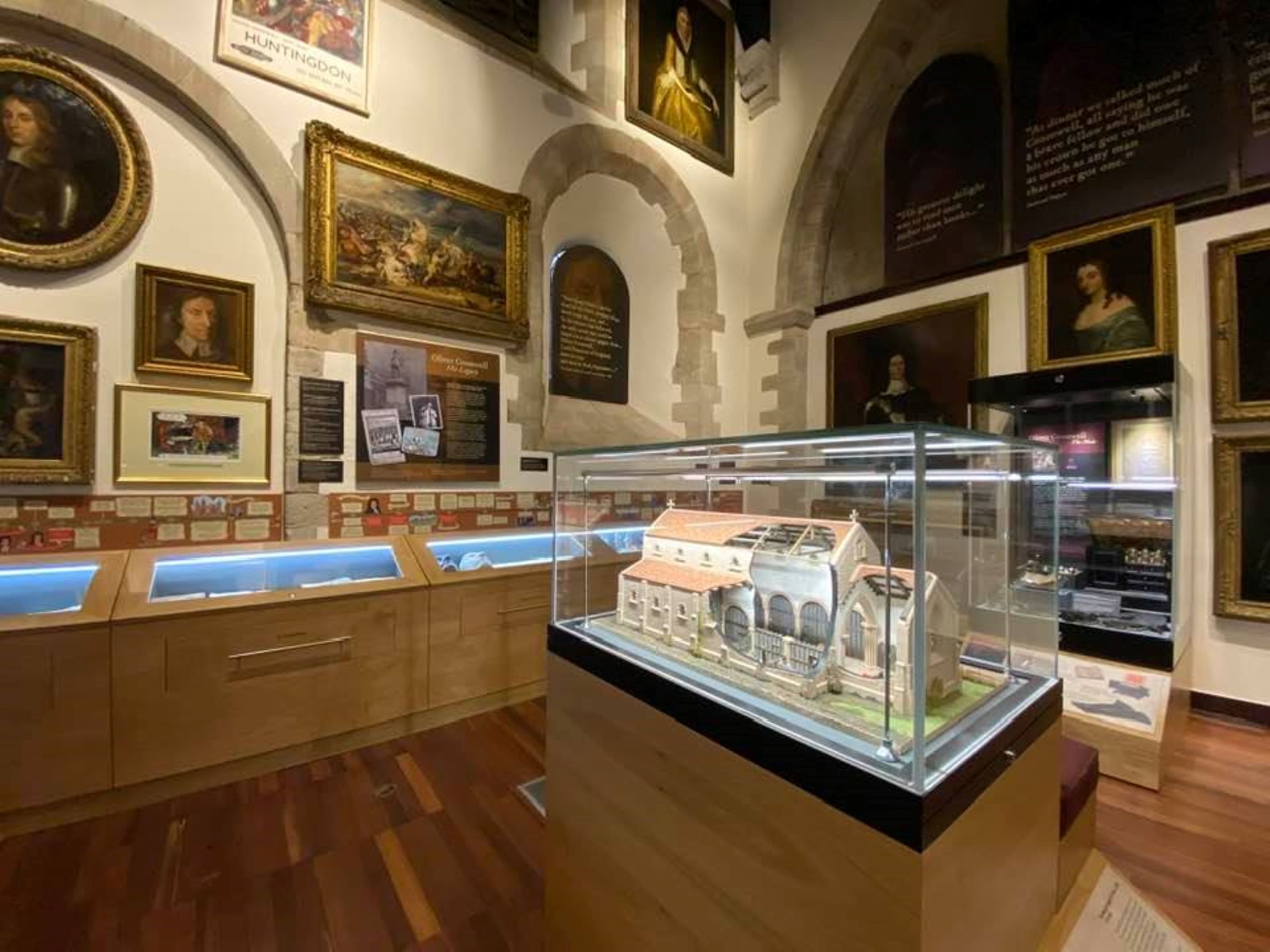Stay in touch with the latest news from AIM and get information on sector grants, jobs and events with our free fortnightly E-News.
Museum Profile – The Cromwell Museum

The Cromwell Museum is a contradiction; it’s one of the smallest museums in the UK (our gallery space is currently a single room just 70 metres square) but has internationally important collections, including iconic paintings by some of the greatest artists of the mid-17th century and unique personal items. It tells the story of a single figure – the 17th century soldier and statesman Oliver Cromwell – but against the tumultuous times through which he lived.
It is also a collection that raises challenges: how do we tell such a complex story in such a small space? How do we deal with a figure who is deeply controversial? Whilst there are many myths about him (not least that he cancelled Christmas . . .) Cromwell is admired by some but reviled by others for his actions, such as his campaigns in Ireland. Our solution is simple: to tell his story, honestly, fairly, but ‘warts and all’. We actively collect in all areas relating to his life and times, especially these controversial areas and it is a key part of our interpretation.
The Museum is located in the heart of the Cambridgeshire market town of Huntingdon, housed in a 12th century building which was the town’s grammar school, attended both by Cromwell (who was born just a few doors up the street) and Samuel Pepys. Normally we attract c.10,000 visitors annually.
The Museum was founded in 1962 and run by the County Council until 2015 when it became an independent charity, the Cromwell Museum Trust, although we are very grateful to Huntingdon Town Council for an annual grant towards our running costs. We have a collection of c.1,000 objects, 70% of which are owned by the Trust, 10% loans from other museums, and 20% a long-term loan of items from Cromwell’s immediate descendants, including his swords, medical chest, family portraits and even his hat.
Like most independent museums, we operate on a tight budget and employ only a single full-time member of staff, myself as curator (since February 2018). We are therefore extremely grateful to our amazing team of c.40 volunteers, who perform front of house, education and many other behind the scenes duties.
The last 18 months have been a rollercoaster for us. Thanks to an £85,000 grant in May 2019 from the AIM Biffa Award ‘History Makers’ programme we were able to contemplate a refurbishment of our very tired exhibition space (last redone in 1989). This provided a catalyst for grants from the Wolfson Foundation and Huntingdon Freemen’s Trust, as well as public donations, a total budget of £170,000. We commissioned JANVS/VIDAR to work for the design and fit of the project, a relationship which proved to be a real partnership, delivering a final product that we are all very proud of.
We closed at the end of September 2019, moved the collection out, stripped the interior and had it completely refitted, with all moved back in by the end of February. We were formally reopened by our Patron, Sir John Major, on Sunday 1 March with a grand parade by the Sealed Knot . . . only to have to close 2 weeks later with the Covid-19 lockdown . . .
Some hasty (and indeed ongoing) fundraising followed, both with public donations and several grants including the Arts Council’s Emergency Fund, which has stabilised us for the time being. We moved a lot of activity online, not only through our already vibrant social media presence, but creating new video content. An ongoing weekly dialogue between myself, trustees and volunteers put together a framework for how we might reopen safely; coupled with sector guidance this enabled us to reopen at the beginning of July.
So far it has gone very well; visitor numbers and income are building back up again steadily. We hope this will continue but are planning for all eventualities. We hope to be able to expand beyond our current building during the next decade, giving our remarkable collections and stories the space that they deserve.
Stuart Orme, Curator, The Cromwell Museum
Watch Stuart talk about the museum’s reopening experience here>>
Read more about The Cromwell Museum’s AIM Biffa Award History Makers grant here>>
Visit The Cromwell Museum website here>>
